Most Pressing Issues
Loss of milkweed
Loss of milkweed needed for monarch caterpillars to grow and develop, due to habitat conversion and adverse land management
Drought conditions
Drought conditions in California and other areas in the western U.S., resulting in lower milkweed biomass, and reduced availability of milkweed late in the summer
Insecticide and herbicide use
Insecticide and herbicide use to control insects and weeds, with unintended consequences for monarchs
Overwintering habitat loss and degradation in California and Mexico
Overwintering habitat loss and degradation in California and Mexico, due to development within and adjacent to overwintering groves, and illegal logging
Historic Population

How You Can Help
Monarch Watch
Monarch Watch is a nonprofit education, conservation, and research program based at the University of Kansas that focuses on the monarch butterfly, its habitat, and its spectacular fall migration.
Learn More about Monarch WatchMonarch Butterfly Fund
Monarch Butterfly Fund's mission is to "To foster the conservation of North American monarch butterflies and their migration through habitat conservation, research, monitoring, education and support for sustainable community development in and near monarch habitats in Mexico."
Learn More about Monarch Butterfly FundForests for Monarchs
Forests for Monarchs to restore the environment for overwintering monarchs and other wildlife, as well as for the people who live there.
Learn More about Forests for MonarchsNorth American Pollinator Protection Campaign
North American Pollinator Protection Campaign a collaborative body of over 140 organizations that work for the protection of pollinators across Mexico, Canada, and the United States.
Learn More about North American Pollinator Protection Campaign




